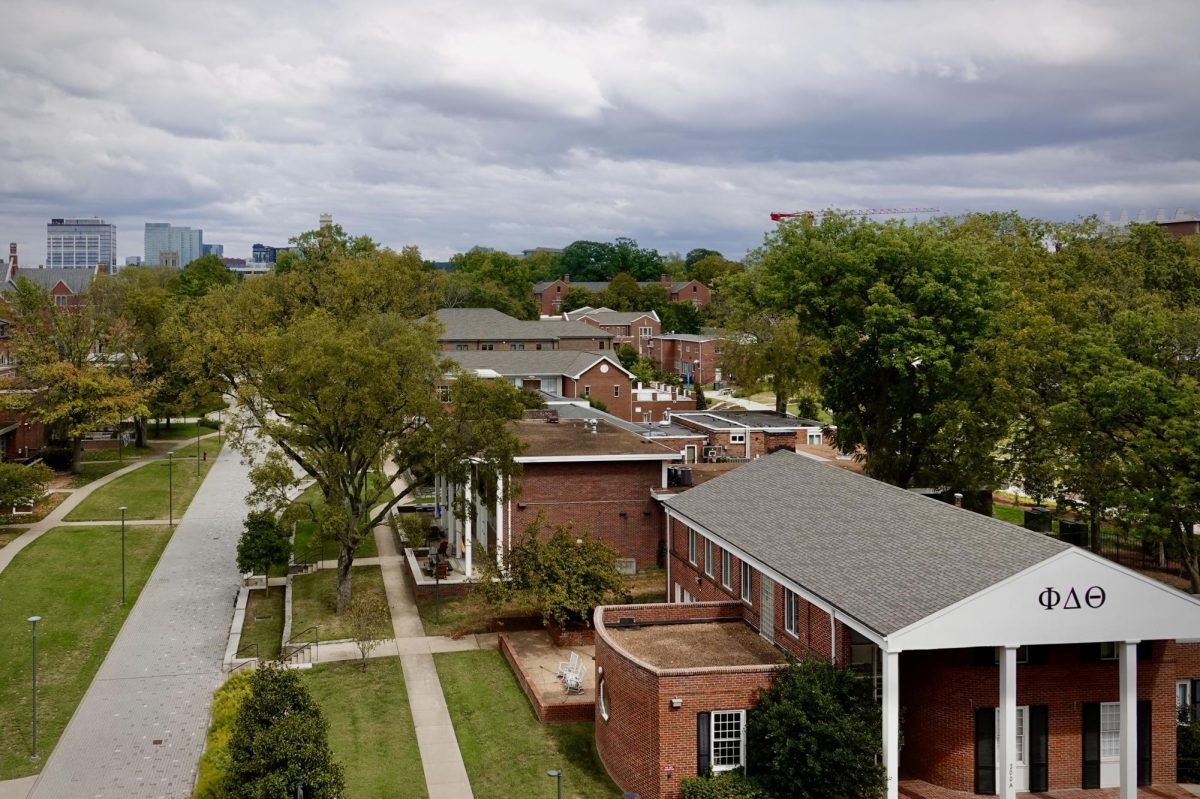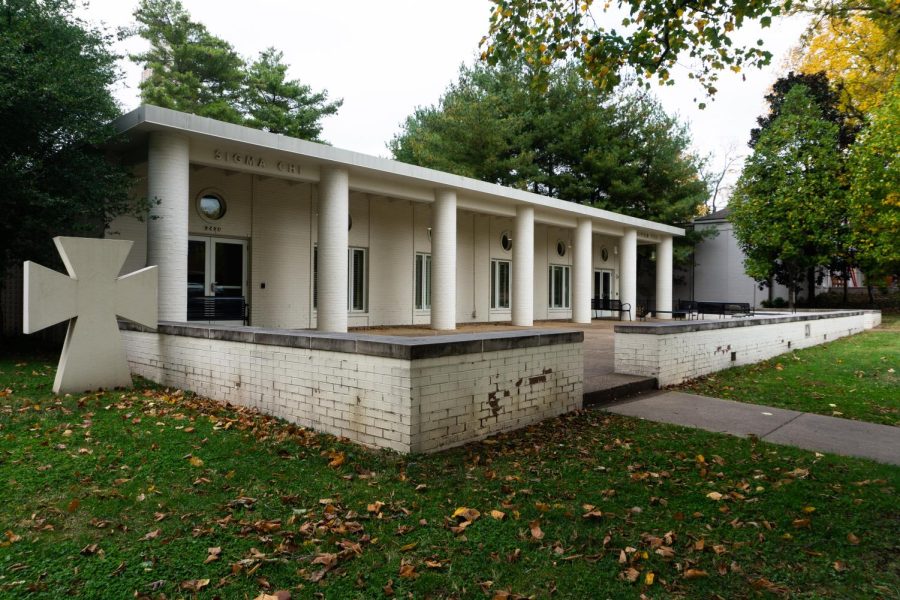There are few things as endemic to Greek culture on campus as composite photographs.
Whether you dress to the nines for your photo, frame and hang the final prints or steal them at frat parties when no one’s looking, it’s hard to be on Greek Row without noticing one of these giant group pictures fixed to the wall. Composites, so named because they are “composed” of each member’s photograph, adorn every fraternity and sorority house on campus. Some can even be found in the Office of Greek Life.
But composites don’t come into existence out of nowhere. Who takes the pictures? And more importantly, how much do they cost student organizations?
I got an inside look at the process as president of my fraternity in 2022. It turns out that Greek composites are a lucrative business, and most photography firms offer them in some capacity. In fact, several companies have dedicated themselves solely to Greek composite photography.
It would be easy to assume that these firms have the process of a photoshoot down to a science, saving their customers money and time. Unfortunately for Greek Row, that assumption couldn’t be further from the truth.
I experienced seemingly endless problems with composite firms. For example, my chapter was charged per member rather than per hour, meaning we were drastically overpaying for our photography session. Between an exorbitant base charge and a 30-person minimum, the least we could pay was about $1,200, effectively a rate of $600 per hour. We were also limited to a two-hour window, with penalties for members who weren’t available during that time. We couldn’t even submit professionally shot photographs as substitutes for absent members: Most firms will refuse to accept such photos on vague grounds of avoiding copyright violations.
We also encountered delays at every stage: In 2022, we were first shown a composite proof four months after our photography date. Our final composite didn’t ship until five months after that first proof was approved, meaning we were almost ready to take composites for the next academic year before anyone in the fraternity saw the final product.
Worse yet, once we had the composite, we still didn’t actually own it. The rights to the photos still belonged to the firms we worked with, meaning brothers who wanted individual copies of the composite or their portraits had to pay extra, on top of the fee the chapter already paid.
The most concerning issue, though, was the consistency of what we perceived to be predatory business practice.
One of the first things I noticed during my term as president was that my chapter had somehow signed a two-year contract with our composite company, Collegiate Composites LLC. We had intended to transition away from Collegiate because our composite from the previous year had been delivered later than we expected, but our contract made that impossible.
Begrudgingly, I conceded, but resolved not to sign any further contracts with Collegiate. At the time, it struck me as strange that our former president would have signed a contract that needlessly bound us to a course of action we would later regret.
The confusion evaporated when, about a month before our composite session, I was presented with another contract to sign by a Collegiate representative. It was a copy of the contract we had already signed, with the dates moved forward to 2023. In other words, it had nothing to do with our upcoming photo shoot as the representative implied, and would have bound us to another year of sub-par service.
Thankfully, I refused to sign it, and the shoot proceeded as expected. The next year, I helped manage our fraternity’s transition to Vantine, a similar Greek composite photography firm. We were explicit in our communications with them that we would not sign any paperwork on the day of the shoot. Yet we weren’t surprised when they also tried to lure us into a two-year agreement as we helped set up the photographer’s equipment. Completely disregarding our communications, they presented the new contract as if it were a formality required to continue with the shoot. A two-year composite agreement is such standard practice for Vantine that our eventual one-year contract left blank spaces where the second year’s start and end dates would have been.
Both Collegiate and Vantine tried to get us to sign contracts to which we explicitly did not agree without fully informing us of the terms. Both companies played it off as a miscommunication or an accident. Personally, though, I’m skeptical that two separate firms would make the same kind of mistake in back-to-back years, especially when that mistake explicitly benefits them.
These companies know fraternities and sororities are cash-flush, with high rates of leadership turnover. They also know there is minimal oversight from the universities that host them and minimal communication between chapters on almost all internal details. Why wouldn’t they use that knowledge to trap student organizations into contracts that force them to overpay for underwhelming photography and customer service?
By 2023, we were fed up with boring, unflattering portrait photography, months-long delays and abusive business relationships. So, I volunteered for a third time to handle the fraternity’s composites. This time, though, I didn’t want to play by the rules — and you don’t have to, either. Here’s how to do your composites the right way.
First, find a photographer. If you aren’t picky, this can be anybody with a camera and free time. If you want somebody with a bit more experience, The Hustler’s photography section is full of talented staffers looking for just this kind of opportunity. In fact, The Hustler’s photography director Josh Rehders shot some phenomenal portrait photography for my chapter’s 2023 composite.
Then, set a date and time. We took our photos outside in EBI’s courtyard, which made for great natural lighting, but indoors is better if consistency between photos is your goal. Agree on a rate, and make sure it’s by the hour, which will reduce costs substantially. Working with an independent student photographer means added flexibility with photos so members have more choice in what they wear for their pictures; our previous photographers forbade anything beyond a suit and the fraternity tie.
Once your photographer is done with any retouching or editing, they can get you all of the pictures at once, weeks before your final composite is printed. That means professional-quality headshots for every member of our fraternity in a format they could keep on their phones. It also means joint rights to the pictures: Both the fraternity and our photographer could use them as they saw fit. Sharing is caring.
Designing a print is straightforward and can be done using software like Adobe Illustrator. That said, Adobe Illustrator wasn’t my forte. I suggested the chapter spend a little extra to contract this part of the job out to someone who knew what they were doing. Within two weeks, we had two versions of the final print: one for our composite, and one that would work on an 8.5” by 11” piece of printer paper, in case anyone wanted a smaller copy.
Printing the composite was the easiest part: I emailed our proof to a UPS Store and printed a 24” by 36” copy for under $50. A wooden frame from Amazon cost about the same, and before I knew it, we had a composite framed and finished in our house before April.
The do-it-yourself approach turned out to be a huge success. We saved the chapter over 60% on composite-related expenses, which left us enough money to lower dues and plan more events. On top of that, we had the final product months before any firm would have delivered it to us, and we had easily accessible, high-quality portraits for every member. Plus, the money we spent on photography and design went back to Vanderbilt students rather than into the pockets of some faraway company with predatory tendencies.
I’m writing this piece to make sure that every student organization knows that this approach is not only possible, but easy and effective. Next spring, take a look at the contracts your photography company sends you, and do your best to avoid trapping yourself into a bad deal. The more members you have, the more money you can save and the more fun you can have on campus as a result.
But this mindset goes beyond composites as well. Too often, we assume problems are unavoidable because no one has ever tried to solve them. Students all across campus are experts in their craft and are always looking for opportunities. Helping your club could be just what someone needs. Just because something is outside the box doesn’t mean it’s off the table, and if students anywhere can find a new way to make a difference, it’s students at Vanderbilt.








